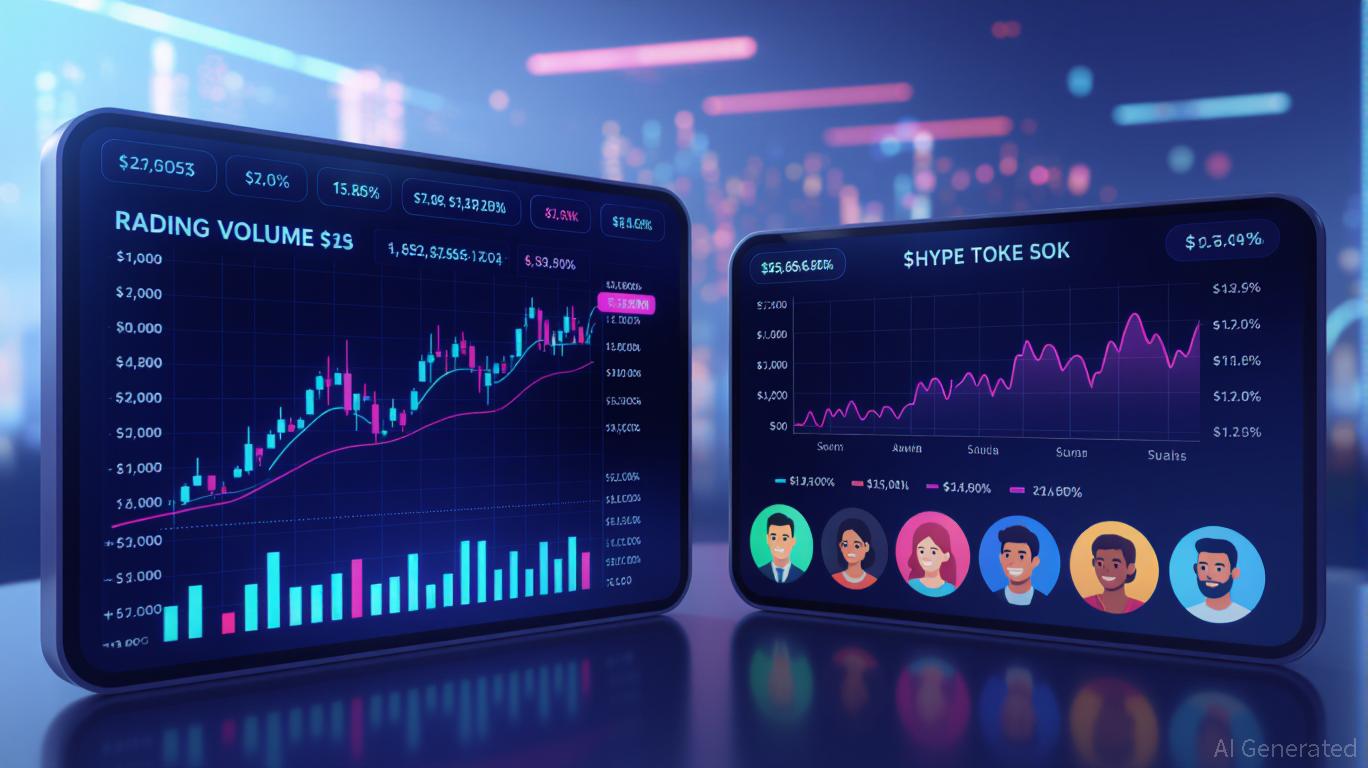Hyperliquid's Recent Rise in Attention from Retail Investors: The Impact of Retail-Fueled Liquidity on the Evolution of DeFi Trading Patterns
- Hyperliquid's retail-driven growth, fueled by token airdrops and buybacks, boosted 2025 trading volume to $320B and protocol revenue to $86.6M. - The platform's 6.1% global derivatives market share and $2.15B TVL highlight its impact on DeFi liquidity and institutional adoption. - Challenges include regulatory scrutiny and a 11.2% institutional market share decline due to tokenomics issues like a $10.8B HYPE unlock over two years.
Retail User Growth: A Catalyst for DeFi Innovation
Since its debut in 2023, Hyperliquid’s retail user numbers have soared, propelled by decentralized token allocation and incentive-based features.
The Assistance Fund, introduced in January 2025, further boosted retail participation by dedicating 97% of trading fees to buying $HYPE. This buyback approach has

Liquidity Metrics and Institutional Adoption
Hyperliquid’s liquidity statistics highlight its expanding role in DeFi. By 2025, the platform’s Total Value Locked (TVL) reached $2.15 billion,
Liquidity provided by retail users has also improved market efficiency. Hyperliquid’s adaptive funding rates, which automatically recalibrate to balance long and short positions, enhance capital utilization for traders. The platform’s integration with trusted price oracles such as
Challenges and Regulatory Considerations
Despite Hyperliquid’s remarkable growth, caution is warranted for investors. The platform’s hybrid approach—merging DeFi openness with the speed of centralized exchanges—faces regulatory scrutiny, especially under new frameworks like the EU’s Markets in Crypto-Assets (MiCA). Institutions have responded by implementing liquidity stress tests and adopting diversified strategies, including covered calls and cash-secured puts, to manage risk. Additionally, smart contract audits and multi-signature wallets are increasingly standard to address counterparty and asset security issues.
Conclusion
Hyperliquid’s rise in retail participation demonstrates how decentralized platforms can leverage user-driven liquidity to challenge conventional trading models. By aligning token economics with user rewards and utilizing advanced infrastructure, the platform has reshaped DeFi liquidity. However, continued success will depend on regulatory compliance and sustainable tokenomics.
Disclaimer: The content of this article solely reflects the author's opinion and does not represent the platform in any capacity. This article is not intended to serve as a reference for making investment decisions.
You may also like
Aster News Today: Aster Moves Tokens to Public Wallet Address to Address Community Uncertainty
- Aster clarified token unlock date adjustments were due to miscommunication, confirming no policy changes to tokenomics despite CMC/Binance listing discrepancies. - 6.06 billion ASTER remain locked, with unused tokens now transferred to a public wallet to enhance transparency and address dilution concerns. - ASTER price surged 10% to $1.12 amid Binance CZ's $2.5M holding disclosure and a $860K short liquidation, despite declining protocol fees and open interest. - Project maintains 20% supply allocation f

Aster News Today: Aster's Public Wallet Initiative Seeks to Restore Confidence in DeFi Following Data Confusion
- Aster clarified its tokenomics remain unchanged after CoinMarketCap's data update caused confusion over delayed ASTER token unlocks. - The project will transfer unused tokens to a public wallet for transparency, addressing concerns about supply shocks and miscommunication. - ASTER's price briefly rose 10% post-clarification, while experts praised its proactive governance approach in rebuilding DeFi trust. - The incident highlights crypto data reporting vulnerabilities, with delayed unlocks on aggregators

Ethereum Latest Updates: Major Holders and Institutions Accumulate ETH While Individual Investors Exit
- Ethereum long-term holders are selling at 2021's fastest pace as macroeconomic uncertainty and weak institutional demand drive ETH below $3,500. - Institutional investors and whales are accumulating ETH via leveraged stablecoin loans and OTC channels, including a $1.33B whale purchase from Aave . - Market analysts note divergent dynamics between retail exodus and institutional buying, with whale activity often preceding market bottoms according to SynFutures CEO Rachel Lin. - U.S. spot ETH ETF outflows a

Bitcoin Updates: Trump Family Embraces Crypto—Adapting to Market Slumps with AI-Powered Mining Transformation
- Anthony Scaramucci led a $220M investment in Trump-linked crypto miner American Bitcoin Corp., betting on Bitcoin's long-term potential amid market volatility. - Trump family's ABTC reported $3.5M Q3 profit, but Bitcoin's 12% price drop since October has eroded their crypto-linked wealth by ~30%. - Crypto miners like Bitfarms pivot to AI infrastructure as Bitcoin profitability declines, reflecting industry-wide diversification strategies. - Trump's pro-crypto policies and BlackRock's Binance listing sign
